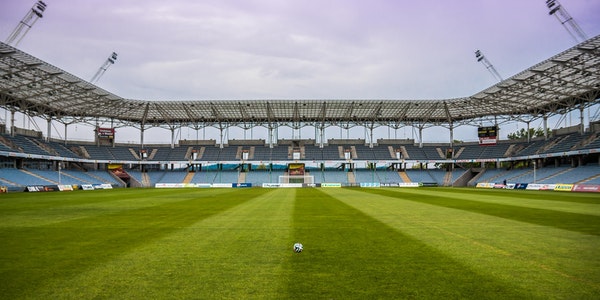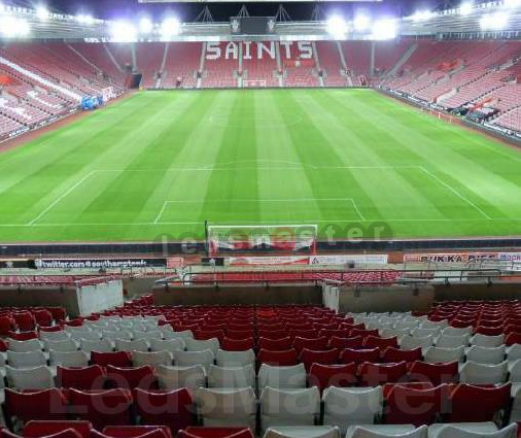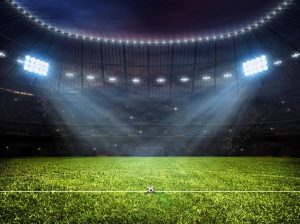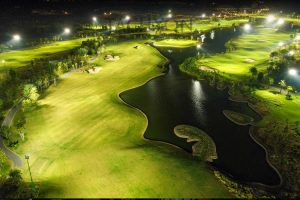Overall, the transition to LED lighting offers numerous benefits for sports teams and stadium operators, including energy efficiency, cost savings, environmental sustainability, improved lighting quality, and durability. By embracing LED technology, teams like Liverpool FC can enhance the performance and efficiency of their lighting systems while reducing their environmental footprint and operating costs in the long run.
3. Implementation process
(1) Assessment and Planning:
Conduct a thorough assessment of the existing lighting system, including the type of fixtures, lighting requirements, and energy consumption.
Identify areas where LED lighting can be most beneficial, such as playing fields, spectator areas, concourses, and parking lots.
Develop a comprehensive lighting plan that outlines the scope of the project, budget considerations, and timeline for implementation.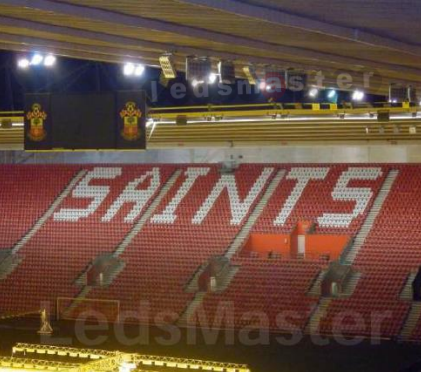
(2) Design and Specification:
Collaborate with lighting designers, engineers, and manufacturers to design an LED lighting solution tailored to the specific needs and requirements of the stadium.
Select LED fixtures that meet performance criteria, such as light output, color temperature, beam angle, and durability.
Specify additional components, such as lighting controls, sensors, and dimming systems, to optimize energy efficiency and lighting quality.
(3) Procurement and Installation:
Procure LED lighting fixtures and related equipment from reputable suppliers or manufacturers, ensuring compliance with quality standards and specifications.
Coordinate with contractors, electricians, and installation teams to execute the installation of LED lighting fixtures according to the approved lighting plan.
Implement safety measures and adhere to relevant regulations and standards throughout the installation process to ensure the safety of workers and stadium occupants.
- Testing and Commissioning:
Conduct thorough testing and commissioning of the newly installed LED lighting system to ensure proper functionality, performance, and compliance with design requirements.
Verify lighting levels, uniformity, color rendering, and control functionalities to ensure they meet the desired standards and specifications.
Address any issues or deficiencies identified during testing and commissioning, and make necessary adjustments or modifications to optimize system performance.
- Training and Education:
Provide training and education to stadium staff, maintenance personnel, and facility managers on the operation, maintenance, and troubleshooting of the LED lighting system.
Distribute user manuals, documentation, and resources to support ongoing maintenance and operation of the lighting system.
Educate stakeholders, including players, coaches, and spectators, on the benefits of LED lighting and any changes to lighting-related protocols or procedures.
- Monitoring and Maintenance:
Implement a proactive monitoring and maintenance program to ensure the long-term performance and reliability of the LED lighting system.
Regularly inspect and clean fixtures, replace faulty components, and address any issues or malfunctions promptly to prevent downtime and ensure optimal operation.
Monitor energy consumption, lighting usage patterns, and performance metrics to identify opportunities for further optimization and efficiency improvements over time.
By following a structured implementation process, sports teams and stadium operators can successfully transition to LED lighting technology and reap the benefits of improved energy efficiency, cost savings, and enhanced lighting quality in their facilities.
4. Results and benefits achieved
Results and Benefits Achieved from Transitioning to LED Lighting:
- Energy Savings: The transition to LED lighting at Anfield Stadium has resulted in significant energy savings compared to traditional lighting technologies. LED fixtures consume less electricity to produce the same amount of light, leading to lower energy bills and reduced overall energy consumption for Liverpool FC.
- Cost Reduction: The adoption of LED lighting has led to cost reductions for the club, both in terms of energy expenses and maintenance costs. With longer lifespans and reduced maintenance requirements, LED fixtures require fewer replacements and repairs, resulting in lower operational expenses over time.
- Environmental Impact: By reducing energy consumption and greenhouse gas emissions, the switch to LED lighting has contributed to environmental sustainability and reduced the carbon footprint of Anfield Stadium. Liverpool FC’s commitment to environmental responsibility aligns with broader efforts to mitigate climate change and promote sustainability in the sports industry.
- Improved Lighting Quality: The transition to LED lighting has enhanced the quality of illumination at Anfield Stadium, providing brighter, more uniform lighting with better color rendering and reduced glare. This has improved visibility for players and spectators alike, enhancing the overall matchday experience and ensuring optimal viewing conditions for fans.
- Enhanced Flexibility and Control: LED lighting systems offer greater flexibility and controllability compared to traditional lighting technologies, allowing for dynamic lighting effects, color changes, and dimming capabilities. This flexibility enables Liverpool FC to create immersive lighting experiences, enhance branding opportunities, and adapt lighting settings to different events and occasions.
- Longevity and Durability: LED fixtures have longer lifespans and greater durability than traditional lighting sources, reducing the frequency of replacements and maintenance tasks at Anfield Stadium. The robust construction of LED fixtures makes them more resistant to damage from vibrations, impacts, and weather conditions, ensuring reliable performance and reduced downtime for stadium operations.
Overall, the transition to LED lighting has delivered tangible benefits for Liverpool FC and Anfield Stadium, including energy savings, cost reduction, environmental sustainability, improved lighting quality, enhanced flexibility, and greater longevity. By embracing LED technology, the club has demonstrated its commitment to innovation, efficiency, and environmental stewardship while enhancing the matchday experience for fans and stakeholders.
B. Case study 2: Real Madrid
1. Overview of the team and their stadium
Overview of the Team and Their Stadium:
Real Madrid Club de Fútbol, commonly referred to as Real Madrid, is one of the most successful and prestigious football clubs in the world. Founded in 1902, the club is based in Madrid, Spain, and competes in La Liga, the top tier of Spanish football. Real Madrid has a rich history of success, boasting numerous domestic and international titles, including multiple UEFA Champions League trophies.
Santiago Bernabéu Stadium: The Santiago Bernabéu Stadium is the iconic home ground of Real Madrid Football Club. Located in the heart of Madrid, the stadium has served as the club’s home since its inauguration in 1947. Named after former club president Santiago Bernabéu, the stadium has undergone several renovations and expansions over the years to accommodate the club’s growing fanbase and modernize its facilities.
Key Features of Santiago Bernabéu Stadium:
- Capacity: Santiago Bernabéu Stadium has a seating capacity of over 81,000 spectators, making it one of the largest football stadiums in Europe.
- History: The stadium has a storied history and has hosted numerous historic matches, including UEFA Champions League finals, Copa del Rey finals, and international fixtures.
- Facilities: Santiago Bernabéu Stadium features state-of-the-art facilities, including hospitality suites, VIP lounges, museum, and trophy room, showcasing the club’s rich heritage and achievements.
- Location: Situated in the heart of Madrid, the stadium is easily accessible via public transportation and is surrounded by shops, restaurants, and cultural attractions, making it a popular destination for football fans and tourists alike.
- Redevelopment: Real Madrid has announced plans for a major redevelopment project, known as the Santiago Bernabéu Stadium Transformation, aimed at modernizing and expanding the stadium’s facilities, improving fan amenities, and enhancing the overall matchday experience.
Santiago Bernabéu Stadium holds a special place in the hearts of Real Madrid supporters worldwide and remains an iconic symbol of the club’s rich history, tradition, and success. As Real Madrid continues to strive for excellence on the pitch, Santiago Bernabéu Stadium serves as a fitting stage for the club’s illustrious legacy and aspirations for the future.
2. Reasons for transitioning to LED lighting
Reasons for Transitioning to LED Lighting at Real Madrid:
- Energy Efficiency: Transitioning to LED lighting at the Santiago Bernabéu Stadium offers significant energy efficiency benefits. LED fixtures consume less energy than traditional lighting technologies, resulting in lower electricity bills and reduced overall energy consumption for Real Madrid.
- Cost Savings: LED lighting provides long-term cost savings for the club, both in terms of energy expenses and maintenance costs. With lower energy consumption and longer lifespans, LED fixtures require fewer replacements and repairs, resulting in reduced operational expenses and greater financial savings over time.
- Environmental Sustainability: LED lighting contributes to environmental sustainability by reducing greenhouse gas emissions and minimizing the carbon footprint of Santiago Bernabéu Stadium. Real Madrid’s commitment to environmental responsibility aligns with broader efforts to mitigate climate change and promote sustainable practices in the sports industry.
- Improved Lighting Quality: LED lighting enhances the quality of illumination at the Santiago Bernabéu Stadium, providing brighter, more uniform lighting with better color rendering and reduced glare. This improves visibility for players and spectators, enhancing the overall matchday experience and ensuring optimal viewing conditions for fans.
- Enhanced Flexibility and Control: LED lighting systems offer greater flexibility and controllability compared to traditional lighting technologies, allowing for dynamic lighting effects, color changes, and dimming capabilities. This flexibility enables Real Madrid to create immersive lighting experiences, enhance branding opportunities, and adapt lighting settings to different events and occasions at the stadium.
- Longevity and Durability: LED fixtures have longer lifespans and greater durability than traditional lighting sources, reducing the need for frequent replacements and maintenance tasks at the Santiago Bernabéu Stadium. The robust construction of LED fixtures ensures reliable performance and reduced downtime for stadium operations, enhancing operational efficiency and continuity.
Overall, transitioning to LED lighting at the Santiago Bernabéu Stadium offers numerous benefits for Real Madrid, including energy savings, cost reduction, environmental sustainability, improved lighting quality, enhanced flexibility, and greater longevity. By embracing LED technology, the club demonstrates its commitment to innovation, efficiency, and environmental stewardship while enhancing the matchday experience for fans and stakeholders.
3. Implementation process
Implementation Process of Transitioning to LED Lighting at Real Madrid:
- Assessment and Planning:
Conduct a comprehensive assessment of the existing lighting system at the Santiago Bernabéu Stadium, including the type of fixtures, lighting requirements, and energy consumption.
Identify areas where LED lighting can be most beneficial, such as playing fields, spectator areas, concourses, and hospitality suites.
Develop a detailed lighting plan that outlines the scope of the project, budget considerations, and timeline for implementation, taking into account the unique requirements of the stadium and the preferences of Real Madrid.
- Design and Specification:
Collaborate with lighting designers, engineers, and manufacturers to design an LED lighting solution tailored to the specific needs and requirements of the Santiago Bernabéu Stadium.
Select LED fixtures that meet performance criteria, such as light output, color temperature, beam angle, and durability, ensuring compatibility with existing infrastructure and aesthetics.
Specify additional components, such as lighting controls, sensors, and dimming systems, to optimize energy efficiency and lighting quality while providing flexibility and ease of operation.
- Procurement and Installation:
Procure LED lighting fixtures and related equipment from reputable suppliers or manufacturers, ensuring compliance with quality standards and specifications.
Coordinate with contractors, electricians, and installation teams to execute the installation of LED lighting fixtures according to the approved lighting plan.
Implement safety measures and adhere to relevant regulations and standards throughout the installation process to ensure the safety of workers and stadium occupants.
- Testing and Commissioning:
Conduct thorough testing and commissioning of the newly installed LED lighting system to ensure proper functionality, performance, and compliance with design requirements.
Verify lighting levels, uniformity, color rendering, and control functionalities to ensure they meet the desired standards and specifications.
Address any issues or deficiencies identified during testing and commissioning, and make necessary adjustments or modifications to optimize system performance and user satisfaction.
- Training and Education:
Provide training and education to stadium staff, maintenance personnel, and facility managers on the operation, maintenance, and troubleshooting of the LED lighting system.
(To Be Continued)

